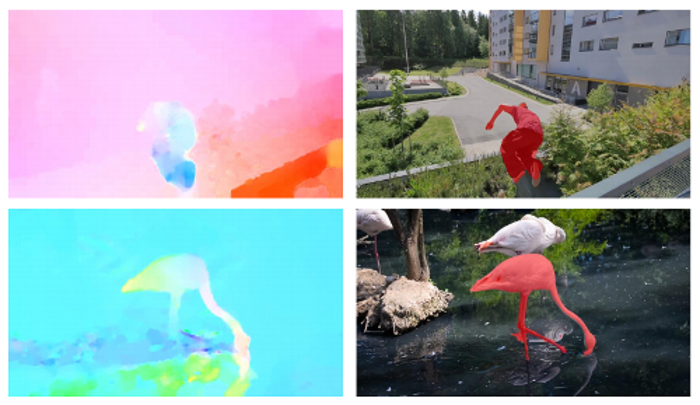Learning Motion Pattern in Videos

Abstract
The problem of determining whether an object is in motion, irrespective of the camera motion, is far from being solved. We address this challenging task by learning motion patterns in videos. The core of our approach is a fully convolutional network, which is learnt entirely from synthetic video sequences, and their ground-truth optical flow and motion segmentation. This encoder-decoder style architecture first learns a coarse representation of the optical flow field features, and then refines it iteratively to produce motion labels at the original high-resolution. The output label of each pixel denotes whether it has undergone independent motion, i.e., irrespective of the camera motion. We demonstrate the benefits of this learning framework on the moving object segmentation task, where the goal is to segment all the objects in motion. To this end we integrate an objectness measure into the framework. Our approach outperforms the top method on the recently released DAVIS benchmark dataset, comprising real-world sequences, by 5.6%. We also evaluate on the Berkeley motion segmentation database, achieving state-of-the-art results.
Paper
BibTeX
@InProceedings{Tokmakov17,
author = "Tokmakov, P. and Alahari, K. and Schmid, C.",
title = "Learning Motion Patterns in Videos",
booktitle = "CVPR",
year = "2017"
}
Code
The code and trained models are available under this link.
See the details in the README file.
The estimated moving object labels can be downloaded here. Please unpack this archive into the root directory of the FlyingThings3D dataset.Acknowledgements
This work was supported in part by the ERC advanced grant ALLEGRO, the MSR-Inria joint project, a Google research award and a Facebook gift. We gratefully acknowledge the support of NVIDIA with the donation of GPUs used for this research.
Copyright Notice
The documents contained in these directories are included by the contributing authors as a means to ensure timely dissemination of scholarly and technical work on a non-commercial basis. Copyright and all rights therein are maintained by the authors or by other copyright holders, notwithstanding that they have offered their works here electronically. It is understood that all persons copying this information will adhere to the terms and constraints invoked by each author's copyright. This page style is taken from Guillaume Seguin.